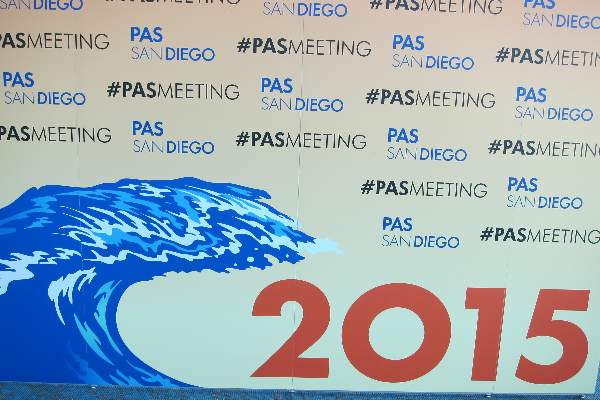User login
SAN DIEGO – The bulk of outpatient pediatric mental health care is provided solely by primary care physicians, not psychiatrists, according to a national study.
The national data also showed that primary care physicians (PCPs) are more likely than psychiatrists to prescribe psychotropic medications for children and adolescents with mental health conditions, L. Elizabeth Anderson reported at the annual meeting of the Pediatric Academic Societies.
She presented an analysis of the Agency for Healthcare Quality and Research’s Medical Expenditure Panel Survey(MEPS), which contains data on a nationally representative cohort’s types of outpatient visits, the specialties of the physicians seen, conditions diagnosed, prescribed medications, and sociodemographic factors.
The MEPS data highlight just how commonly children and adolescents seek professional help for anxiety, depression, conduct disorders, and behavioral disorders. Extrapolating from this analysis of 1,778 youths aged 2-21 years with a mental disorder, an estimated 5.2% of U.S. children and adolescents have had one or more outpatient mental health visits within the past year, according to Ms. Anderson, a medical student at the University of Tennessee, Memphis.
Attention-deficit/hyperactivity disorder accounted for 65% of these outpatient visits, mood disorders 24%, anxiety 19%, pervasive developmental disorder 7%, and psychoses 1.3%. Patients could have more than one diagnosis.
Fully 35% of the youths received their outpatient care for mental health conditions solely from a PCP. Another 26% saw a psychiatrist only, and 15% saw a psychologist and/or social worker only. Roughly one-quarter of subjects saw multiple providers of mental health services, but patient comanagement by a PCP and psychiatrist occurred in only 6.7% of cases.
Primary care physicians appeared to be more comfortable serving as sole care providers for youths with ADHD than those with anxiety and/or mood disorders: 41% of youths with ADHD had a PCP as their sole provider, compared with 17% of those with an anxiety and/or mood disorder.
Sixty-nine percent of patients with a mental health disorder that was managed solely by a PCP received a prescription for psychotropic medication, as did 62% of those seen by a psychiatrist only. The difference in prescribing patterns was more marked in patients with ADHD: 73% of those treated by a PCP received a prescription, compared with 58% of those treated by a psychiatrist.
Thus, the likelihood that a patient with ADHD who was seen by a PCP would receive a prescription for a stimulant or atomoxetine was 65% greater than if seen by a psychiatrist, Ms. Anderson continued.
No consistent associations were seen between provider type or medication prescribing and sociodemographic factors including ethnicity, household income, or geographic locale.
With only 8.6 child and adolescent psychiatrists available per 100,000 U.S. pediatric patients, these study findings showing that PCPs now provide a substantial amount of pediatric mental health care provide a strong argument for programs aimed at improving quality of care via point-of-care advice to PCPs from mental health specialists, she said.
Ms. Anderson’s study was supported by a grant from the American Pediatric Society/Society for Pediatric Research student research training program. She reported having no financial conflicts.
SAN DIEGO – The bulk of outpatient pediatric mental health care is provided solely by primary care physicians, not psychiatrists, according to a national study.
The national data also showed that primary care physicians (PCPs) are more likely than psychiatrists to prescribe psychotropic medications for children and adolescents with mental health conditions, L. Elizabeth Anderson reported at the annual meeting of the Pediatric Academic Societies.
She presented an analysis of the Agency for Healthcare Quality and Research’s Medical Expenditure Panel Survey(MEPS), which contains data on a nationally representative cohort’s types of outpatient visits, the specialties of the physicians seen, conditions diagnosed, prescribed medications, and sociodemographic factors.
The MEPS data highlight just how commonly children and adolescents seek professional help for anxiety, depression, conduct disorders, and behavioral disorders. Extrapolating from this analysis of 1,778 youths aged 2-21 years with a mental disorder, an estimated 5.2% of U.S. children and adolescents have had one or more outpatient mental health visits within the past year, according to Ms. Anderson, a medical student at the University of Tennessee, Memphis.
Attention-deficit/hyperactivity disorder accounted for 65% of these outpatient visits, mood disorders 24%, anxiety 19%, pervasive developmental disorder 7%, and psychoses 1.3%. Patients could have more than one diagnosis.
Fully 35% of the youths received their outpatient care for mental health conditions solely from a PCP. Another 26% saw a psychiatrist only, and 15% saw a psychologist and/or social worker only. Roughly one-quarter of subjects saw multiple providers of mental health services, but patient comanagement by a PCP and psychiatrist occurred in only 6.7% of cases.
Primary care physicians appeared to be more comfortable serving as sole care providers for youths with ADHD than those with anxiety and/or mood disorders: 41% of youths with ADHD had a PCP as their sole provider, compared with 17% of those with an anxiety and/or mood disorder.
Sixty-nine percent of patients with a mental health disorder that was managed solely by a PCP received a prescription for psychotropic medication, as did 62% of those seen by a psychiatrist only. The difference in prescribing patterns was more marked in patients with ADHD: 73% of those treated by a PCP received a prescription, compared with 58% of those treated by a psychiatrist.
Thus, the likelihood that a patient with ADHD who was seen by a PCP would receive a prescription for a stimulant or atomoxetine was 65% greater than if seen by a psychiatrist, Ms. Anderson continued.
No consistent associations were seen between provider type or medication prescribing and sociodemographic factors including ethnicity, household income, or geographic locale.
With only 8.6 child and adolescent psychiatrists available per 100,000 U.S. pediatric patients, these study findings showing that PCPs now provide a substantial amount of pediatric mental health care provide a strong argument for programs aimed at improving quality of care via point-of-care advice to PCPs from mental health specialists, she said.
Ms. Anderson’s study was supported by a grant from the American Pediatric Society/Society for Pediatric Research student research training program. She reported having no financial conflicts.
SAN DIEGO – The bulk of outpatient pediatric mental health care is provided solely by primary care physicians, not psychiatrists, according to a national study.
The national data also showed that primary care physicians (PCPs) are more likely than psychiatrists to prescribe psychotropic medications for children and adolescents with mental health conditions, L. Elizabeth Anderson reported at the annual meeting of the Pediatric Academic Societies.
She presented an analysis of the Agency for Healthcare Quality and Research’s Medical Expenditure Panel Survey(MEPS), which contains data on a nationally representative cohort’s types of outpatient visits, the specialties of the physicians seen, conditions diagnosed, prescribed medications, and sociodemographic factors.
The MEPS data highlight just how commonly children and adolescents seek professional help for anxiety, depression, conduct disorders, and behavioral disorders. Extrapolating from this analysis of 1,778 youths aged 2-21 years with a mental disorder, an estimated 5.2% of U.S. children and adolescents have had one or more outpatient mental health visits within the past year, according to Ms. Anderson, a medical student at the University of Tennessee, Memphis.
Attention-deficit/hyperactivity disorder accounted for 65% of these outpatient visits, mood disorders 24%, anxiety 19%, pervasive developmental disorder 7%, and psychoses 1.3%. Patients could have more than one diagnosis.
Fully 35% of the youths received their outpatient care for mental health conditions solely from a PCP. Another 26% saw a psychiatrist only, and 15% saw a psychologist and/or social worker only. Roughly one-quarter of subjects saw multiple providers of mental health services, but patient comanagement by a PCP and psychiatrist occurred in only 6.7% of cases.
Primary care physicians appeared to be more comfortable serving as sole care providers for youths with ADHD than those with anxiety and/or mood disorders: 41% of youths with ADHD had a PCP as their sole provider, compared with 17% of those with an anxiety and/or mood disorder.
Sixty-nine percent of patients with a mental health disorder that was managed solely by a PCP received a prescription for psychotropic medication, as did 62% of those seen by a psychiatrist only. The difference in prescribing patterns was more marked in patients with ADHD: 73% of those treated by a PCP received a prescription, compared with 58% of those treated by a psychiatrist.
Thus, the likelihood that a patient with ADHD who was seen by a PCP would receive a prescription for a stimulant or atomoxetine was 65% greater than if seen by a psychiatrist, Ms. Anderson continued.
No consistent associations were seen between provider type or medication prescribing and sociodemographic factors including ethnicity, household income, or geographic locale.
With only 8.6 child and adolescent psychiatrists available per 100,000 U.S. pediatric patients, these study findings showing that PCPs now provide a substantial amount of pediatric mental health care provide a strong argument for programs aimed at improving quality of care via point-of-care advice to PCPs from mental health specialists, she said.
Ms. Anderson’s study was supported by a grant from the American Pediatric Society/Society for Pediatric Research student research training program. She reported having no financial conflicts.
AT THE PAS ANNUAL MEETING
Key clinical point: Primary care physicians provide a substantial amount of pediatric outpatient care for mental health conditions.
Major finding: 35% of U.S. youths receiving outpatient care for a mental health condition get it solely from a primary care physician, while 26% see a psychiatrist only.
Data source: This study analyzed national data from the Agency for Healthcare Quality and Research’s Medical Expenditure Panel Survey.
Disclosures: The presenter reported having no financial conflicts regarding this study, which was funded free of commercial support.

